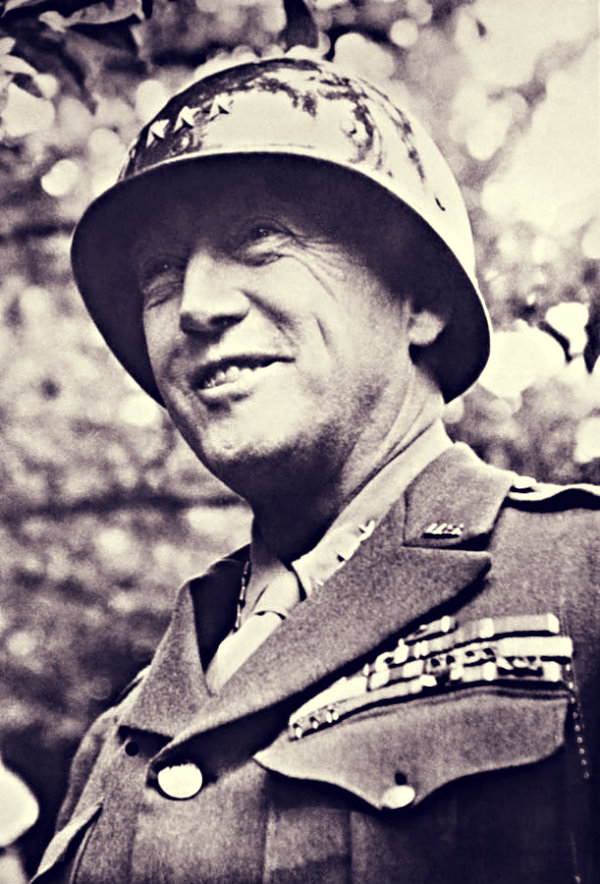Among the greatest of war movies, 1970’s Patton features a mind-blowingly good performance by George C. Scott as the famously colorful WWII general that serves to catapult this epic far above the standard military biopic. The film is not only remarkable for the vivid on-screen portrait of a gifted but notoriously impolitic and ambitious American general helping to turn the tide of war in the United States’ favor but also for the off-screen context of being made at the height of rampant anti-war sentiment in the US and abroad due to the Vietnam War. You would have expected the film to be a hatchet job on an unrepentant warrior from the gung ho past and to reflect the anti-authoritarian zeitgeist of the time. You would also have expected a war-weary public to reject yet another nostalgic World War II movie released at the end of the 60s. Instead, it’s a straightforward yet nuanced portrayal of a seriously flawed but undoubtedly great military leader that earned popular and critical success from the get go with an unapologetically pro-US message. And through the movie we come to see that a man like Patton, a true lover of war who believed himself reincarnated from Roman Legionnaires and Napoleon’s soldiers, should probably be kept in a glass case that says “Break Open in Time of War”. But we also see that it’s surely good to have old soldiers like George S. Patton handy when the stuff hits the fan.
The famous opening sequence, a stylized and also sanitized version of Patton’s famously profane speech to the Third Army, remains one of the movies’ best “grabbers”, as well as one of the most iconic 6 minutes in the history of cinema. And despite Scott’s misgivings that starting with the speech would overwhelm subsequent scenes, that acts as a preamble and the movie gets better from there. It really starts with Patton’s arrival in North Africa to take command of a green and badly demoralized US II Corps after their mauling by Rommel’s Afrika Korps at Kasserine Pass, quickly whipping them into a cohesive fighting unit ready to take on the seasoned and highly accomplished German troops. By utilizing Rommel’s own tank tactics against him, we see the revitalized Americans fight back via impressive large scale armored tank battles thundering from the oversized 65mm widescreen print.
The initial infatuation with Patton and his flamboyant command style, observed through the eyes of then-subordinate general Omar Bradley (who consulted on the film), evolves into something much more ambivalent as Patton gets into a competition against British General Bernard Law Montgomery in Sicily to see who can get to Messina first, seeming to sacrifice the welfare of his troops to win the internecine contest. The fall from grace becomes complete with Patton’s famous slapping of a shell-shocked soldier and loss of his command after the resultant press backlash. This led to America’s best combat general being demoted to a decoy operation rather than participating in the Normandy Invasion on D-Day (the ruse worked because the German high command was convinced Patton would lead the invasion at Pas de Calais). But Patton regains his lost glory after the near-disastrous German counterattack against Allied troops known as the Battle of the Bulge, when he and his beloved Third Army make a high-speed charge across France to relieve the besieged Battered Bastards of Bastogne, eventually scything into Nazi Germany itself.

The genuine article
For Patton, war and command in war were the most important things in a general’s life and his raison d’être. As the war ended he found himself unsuited to peacetime duty in a rebuilding Germany, causing numerous controversies with his anti-Russian advocacy and disparaging remarks on the futility of the de-Nazification process. After his entreaties to be sent to the Pacific Theater earlier in the year had been rejected, it seems almost fitting that he was fatally wounded in a car accident in December of 1945. He could clearly see that there would never be another war like the one in which he had just achieved such immortality. In the end, a man like Patton is made for war. And the United States, with its large but hopelessly inexperienced fighting force drafted after Pearl Harbor, was lucky to have him. He quickly molded his Third Army into a disciplined and lethal fighting force that ejected the Germans from Africa, forcing them to fight retreating actions in Europe and setting the stage for the greater Allied invasion of Operation Overlord. Such vainglorious men can be dangerous in peacetime but, like MacArthur, in the biggest war that the world has ever seen they were crucial to the survival of the United States, Great Britain and a democratic Europe.
Patton the movie lays all that out and more in one of the best and most exciting military biographies ever made. This is in no small part due to Francis Ford Coppola & Edmond H. North’s crackling screenplay. And although Franklin J. Schaffner‘s direction is sometimes turgid he definitely has a feel for the lead actors, the epic quality of his story and the large battle scenes, which have an excellent 3-dimensional aspect to them due to the use of low flying aircraft in addition to land forces. But ultimate glory goes to George C. Scott and his impressive ability to really become this legendary man and display all his great and mean qualities with a skill and inventiveness that most actors can only envy. In fact, Scott won (and famously declined) the Best Actor Oscar for the role. And deservedly so. His Patton is one of the best performances ever given by an actor in a film in one of the best war movies Hollywood ever made. The late great general would be goddamn proud.


